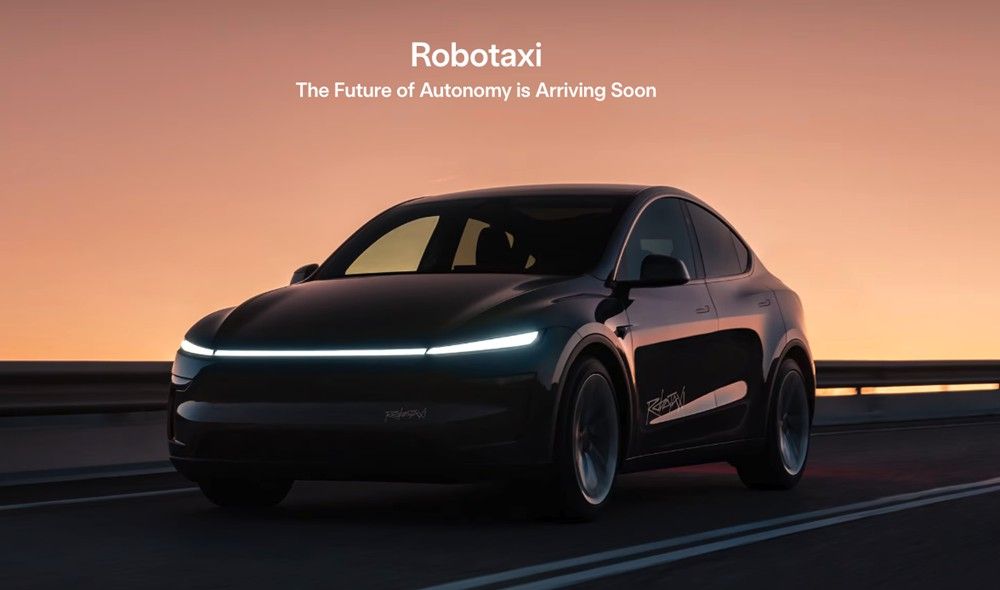MarketLens
Toyota to Launch Self-Driving EV in China, Following Tesla’s Lead: An In-Depth Analysis
Toyota has announced its ambitious plans to launch its first electric vehicle (EV) equipped with advanced autonomous driving technology in China by 2025. This strategic move aims to compete directly with Tesla, which has been a dominant player in the self-driving EV market. This report provides a comprehensive analysis of Toyota’s strategy, the competitive landscape, and the potential implications for various stakeholders. By synthesizing information from multiple sources, we will critically evaluate the data, identify underlying trends, and discuss the broader implications of this development.
Toyota’s Strategic Move
Market Context and Objectives
Toyota’s decision to launch a self-driving EV in China is driven by several factors. The Chinese market is the largest for EVs globally, with sales expected to reach 20% of all new car sales by 2025. The Chinese government has been actively promoting the development of self-driving technology through favorable policies and investments. Toyota aims to regain market share in China by catching up with local competitors in hybrid technology, batteries, and intelligent vehicles.
Technological Advancements
Toyota’s upcoming EV, the Bozhi 3X, will feature advanced autonomous driving capabilities similar to Tesla’s Full Self-Driving (FSD) system. Developed in partnership with Momenta, a Beijing-based autonomous vehicle startup, the Bozhi 3X will offer advanced driving assistance on highways, around town, and in parking situations. Additionally, Toyota plans to roll out an iron phosphate lithium battery between 2026 and 2027, which could reduce the production cost of its bZ4X EV by 40%.
Competitive Landscape
Tesla’s Dominance and Challenges
Tesla has been a leader in the self-driving EV market with its Autopilot and FSD systems. However, Tesla’s FSD is not fully autonomous and requires driver supervision. Despite its technological advancements, Tesla faces regulatory hurdles in many regions, including China. Moreover, Tesla’s market share in China has been challenged by local manufacturers who are building competitive products, some of which are government-funded.
Toyota’s Competitive Edge
Toyota’s cautious approach to self-driving technology, focusing on safety and reliability, contrasts with Tesla’s aggressive strategy. Toyota’s partnership with Momenta and its investment in a diversified range of technologies, including hybrids and hydrogen-powered vehicles, provide a robust foundation for its entry into the Chinese market. Additionally, Toyota’s collaboration with Huawei on in-vehicle operating software with autonomous driving capability further strengthens its position.
Market Forces and Trends
Consumer Perceptions and Expectations
Toyota has been slower than some competitors to embrace EV technology and self-driving capabilities, which could impact consumer perceptions. However, Toyota’s reputation for reliability and safety may appeal to Chinese consumers who prioritize these attributes. The success of Toyota’s self-driving EV in China will depend on various factors, including pricing, charging infrastructure, and competition from local and international brands.
Regulatory Environment
The regulatory environment in China is crucial for the adoption of self-driving technology. While Tesla has received tentative approval to launch its FSD system in China, Toyota’s entry into the market will be closely watched by regulators. The Chinese government’s support for self-driving technology through policies and investments is a positive sign for Toyota’s prospects.
Potential Implications for Stakeholders
Toyota
For Toyota, the launch of a self-driving EV in China represents a significant step in its transition to sustainable and smart cars. This move could help Toyota regain market share and establish itself as a major player in the Chinese EV market. The introduction of cost-effective iron phosphate lithium batteries could also enhance Toyota’s competitiveness.
Tesla
Tesla’s dominance in the Chinese market is under threat from both local manufacturers and established players like Toyota. Increased competition could lead to price wars and pressure on Tesla to accelerate its technological advancements. Regulatory challenges and consumer perceptions of safety will also play a critical role in Tesla’s future in China.
Consumers
Chinese consumers stand to benefit from increased competition in the self-driving EV market. With more options available, consumers can choose vehicles that best meet their needs in terms of safety, reliability, and advanced features. The development of charging infrastructure and supportive policies will further enhance the adoption of self-driving EVs.
Industry and Market Dynamics
The entry of Toyota into the self-driving EV market in China could disrupt the current competition and accelerate the adoption of autonomous driving technology. This development may prompt other automakers to invest more heavily in self-driving capabilities and innovative battery technologies. The overall market dynamics will be shaped by technological advancements, regulatory changes, and consumer preferences.
Key Insights and Future Developments
Technological Innovation
Toyota’s partnership with Momenta and Huawei highlights the importance of collaboration in advancing self-driving technology. The development of cost-effective batteries and reliable autonomous systems will be critical for the success of self-driving EVs.
Market Adaptation
Toyota’s multi-pathway product strategy, which includes hybrids, hydrogen-powered vehicles, and EVs, allows the company to adapt to different market conditions. This flexibility will be crucial as the regulatory environment and consumer preferences evolve.
Competitive Pressure
The increased competition in the Chinese self-driving EV market will drive innovation and potentially lower prices for consumers. However, it will also create challenges for automakers to differentiate their products and maintain profitability.
Regulatory Influence
The regulatory environment will play a significant role in shaping the future of self-driving EVs in China. Supportive policies and investments from the government will be essential for the widespread adoption of autonomous driving technology.
Conclusion
In conclusion, Toyota’s plans to launch a self-driving EV in China by 2025 represent a strategic move to compete with Tesla and other local manufacturers in the world’s largest EV market. By leveraging partnerships, technological advancements, and a diversified product strategy, Toyota aims to regain market share and establish itself as a major player in the Chinese EV market. The competitive landscape, regulatory environment, and consumer perceptions will all play critical roles in determining the success of Toyota’s self-driving EV. As the market evolves, continued innovation and adaptation will be essential for automakers to thrive in this dynamic and rapidly changing industry.
Related Articles
Category
You may also like
No related articles available
Breaking News
View All →No topics available at the moment






